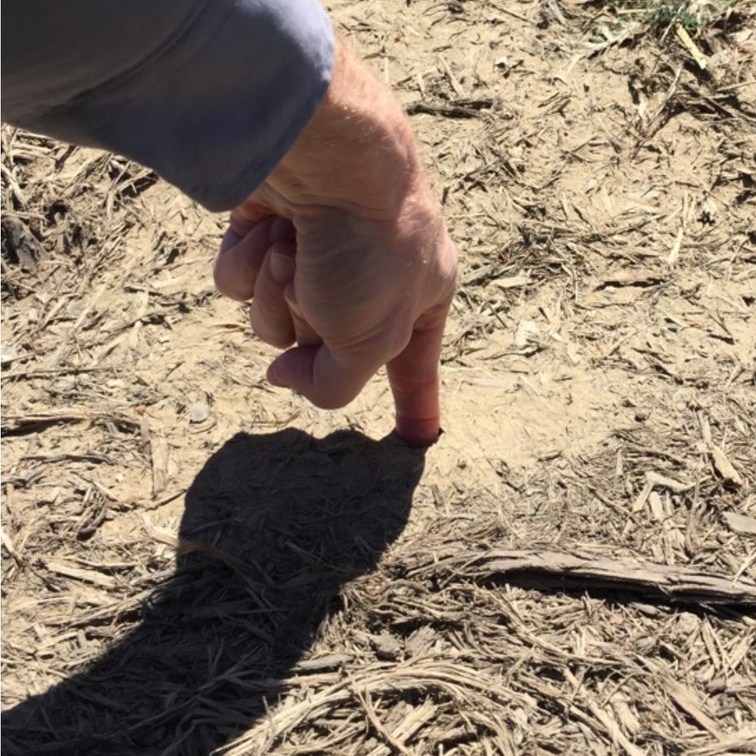When introducing FocalPoint HPMBS to engineers, landscape architects, public agencies and contractors, we sometimes get asked if the mulch layer is really necessary. Some people want to replace it with various sizes and types of rocks while others contemplate eliminating the top layer altogether. We continue to stress the importance of the mulch as an important part of any bioretention system. Recently we inspected a FocalPoint that was installed last fall and found that the mulch layer worked exactly as designed (see pictures below). Although the area immediately surrounding this FocalPoint was stabilized before commissioning the system, there was still a tremendous amount of sediment carried into this basin during the spring months. During our site visit we discovered an area on the site that had been disturbed as part of an unrelated landscape project and not been properly protected. Silt and undesirable mulch from that site was washed into the storm sewer and deposited into this FocalPoint basin. Here are three lessons learned from this inspection:
1) A vegetated BMP between the discharge and the FocalPoint HPMBS is a good first-line of defensive pre-treatment. In the first photo notice the plume of sediment that was captured by the grassed channel between the flared end section and the FocalPoint HPMBS.

2) Mulch quality makes a difference in mulch performance. The FocalPoint HPMBS Specification calls for “… aged shredded hardwood (non-floatable)” mulch. All of these photos show the FocalPoint HPMBS mulch still in place, as intended. In the photo above, you can see a bathtub-ring of the undesirable mulch that floated into the system from upstream…………………………………

3) The specified mulch protective layer is critical to long-term success of FocalPoint or any bioretention system. Even with pre-treatment practices, BMP transition areas, stabilized adjacent slopes and your best intentions, some sediment is going to eventually find its way to your system. When it does, you will be glad that you have a good mulch protective layer in place to capture that sediment before it gets to your media layer. In the second and third photos above you will see a crusted layer of deposited sediment on top of the mulch. The third photo (and several subsequent photos not included) show the bottom couple of inches of the mulch layer as clean. No sediment reached the media. We can now simply remove and replace the mulch layer and continue with our proposed plantings that were postponed since the commissioning of this system was so late in the year.
We will continue to include the protective mulch layer in our FocalPoint HPMBS as written in the spec. We encourage you to do the same!




